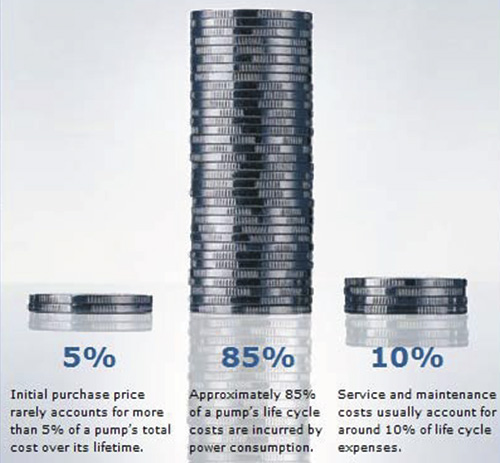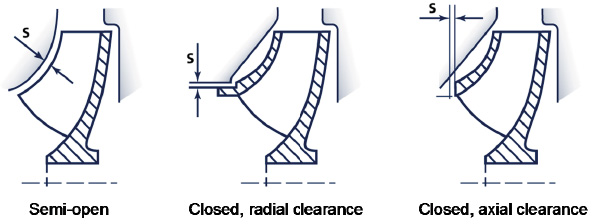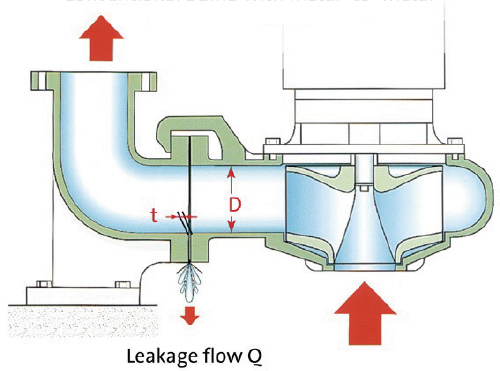Life-cycle cost calculations for wastewater installations can produce huge savings over time for wastewater companies. The life-cycle costs summarize the total cost of a wastewater installation, and the pump system plays a major role. It is the key element to ensuring the installation’s long-term cost-effectiveness.
Total lifetime costs normally include planning, design, purchasing, investment, installation, commissioning, energy, maintenance and operation, and downtime costs. A system can also incur environmental and disposal costs at the end of its lifetime. The pump system has the highest impact on the lifetime cost of the wastewater installation. However, only three of the costs listed above play a significant role in the pump system’s contribution to life-cycle costs: investment, energy and maintenance.
Investment
The initial procurement cost is often seen as the best way to ensure low cost. Meeting investment budgets means keeping in mind that the cost of operation, maintenance and disposal could be five to 20 times higher than the initial investment. This is why municipalities and contractors increasingly consider the requirements for performance, reliability and energy consumption when purchasing a pump system.
 Involve different people to ensure that all aspects of the pump purchase are considered. (Article images and graphics courtesy of Grundfos.)
Involve different people to ensure that all aspects of the pump purchase are considered. (Article images and graphics courtesy of Grundfos.)Energy
Decision makers might think that the energy cost of the pump is easy to calculate. But many things must be considered when determining the energy cost of a pump—such as wear, variable load, installation and clogging.
If the wrong wastewater pump is chosen, the media content leads to wear, costly breakdown and 3 to 5 percent lower efficiency for every year the pump is not maintained.
Most pump brands make it possible to restore efficiency loss. Some have a replaceable wear ring, while others have built-in trimming that allows adjustment of the impeller clearance using outside bolts. Because wear also affects non-replaceable parts of the pump, full restoration of efficiency is impossible.
The design of the pump impeller is a key issue, since a simple design with large free passage and no inserts or moving parts will wear less than a design without these features, thus ensuring a high efficiency over the pump lifetime.
The pump’s duty point is seldom constant and varies over the course of a day, a year and a pump’s lifetime. Users should look for a pump with a flat efficiency curve. This ensures high efficiency over a wide duty range and determines whether the pump is using a variable speed drive. If the pump is running with variable speed, a pump with a duty point to the right of the curve should be selected. When adjusting the speed downward, the pump’s duty point moves to a part of the curve with higher efficiency.
 Figure 1. Wear of impeller clearances with different impeller designs
Figure 1. Wear of impeller clearances with different impeller designsThe energy saved when operating with a variable speed drive depends heavily on the system curve. The savings potential decreases if the static head is small compared to the friction losses. It increases in a system with large friction losses compared to the static head. A variable speed drive can also significantly influence the clogging frequency of the pump, as the water velocity might fall below the self-cleaning velocities in the system.
 Figure 2. Conventional pump with metal-to-metal discharge connection
Figure 2. Conventional pump with metal-to-metal discharge connectionWhen installing a pump system, measures should be taken to avoid leakages, especially where the connection between the pump and the installation equipment is metal-to-metal (see Figure 2). These connections become more susceptible to leaks as the system gets older. Seals or gaskets should be placed at all joints. More leakages mean a greater loss of energy.
A small diameter in the rising main leads to increased head requirements and energy consumption, because small pipes amplify the pipe friction losses of the installation. A small rising main also increases the leakage flow. To avoid high losses, the water velocity through the pipes should be kept low. The exact maximum velocity depends on the length and roughness of the pipes, but as a rule, the velocity should not exceed 3 meters per second (m/s).
Avoiding velocities that are too low is also crucial. Low velocities can cause sedimentation and deposits to build in the pipes, increasing friction losses and energy consumption. Manual pipe cleaning may become necessary to clear the pipes, adding to maintenance costs.
For horizontal rising mains, a minimum of 0.7 m/s is recommended, while a vertical rising main should be dimensioned for a velocity of no less than 1 m/s. This is especially important in pump systems with variable operation. Variable speed drives can heavily influence water velocity, so take care that the pump is not always running at a low speed. The self-cleaning velocity in the pipes otherwise might not be achieved.
More than installation clogging, impeller design relates directly to energy cost. The improved nonclogging capability of an impeller is normally achieved by using semi-open impeller designs, but these designs cause efficiency loss.
New developments now combine the best of both worlds by having nonclogging, high-efficiency impellers with large free passages, no inserts and no moving parts.
Maintenance
Maintenance costs are often difficult to estimate.
Planned maintenance costs will vary depending on many different factors, such as:
- Pump value
- Pump maintenance costs
- Operational experience
- Pump failure consequences
- Pump failure probability
- System design
With small, inexpensive pumps or pumps that are difficult to maintain due to their placement, planned maintenance activities might be kept to a minimum, while large, expensive pumps might get the full range of planned and predictive maintenance.
Stocking recommended spares can make planned maintenance less expensive and more intuitive for operators. This allows worn parts to be changed without special tools or training. Choosing a pump with built-in analogue sensors allows monitoring of the pump’s condition and enhances maintenance planning.
Unplanned maintenance costs can be easily predicted based on an operator’s familiarity with the pump brand and its service friendliness. To determine the cost of the repair, take into account the following:
- Maintenance to be performed on the pump
- Time required for maintenance activity
- Number of personnel involved
- Spare parts cost for maintenance activity
Fast spare part availability also ensures that unplanned maintenance can be conducted quickly and reliably.


